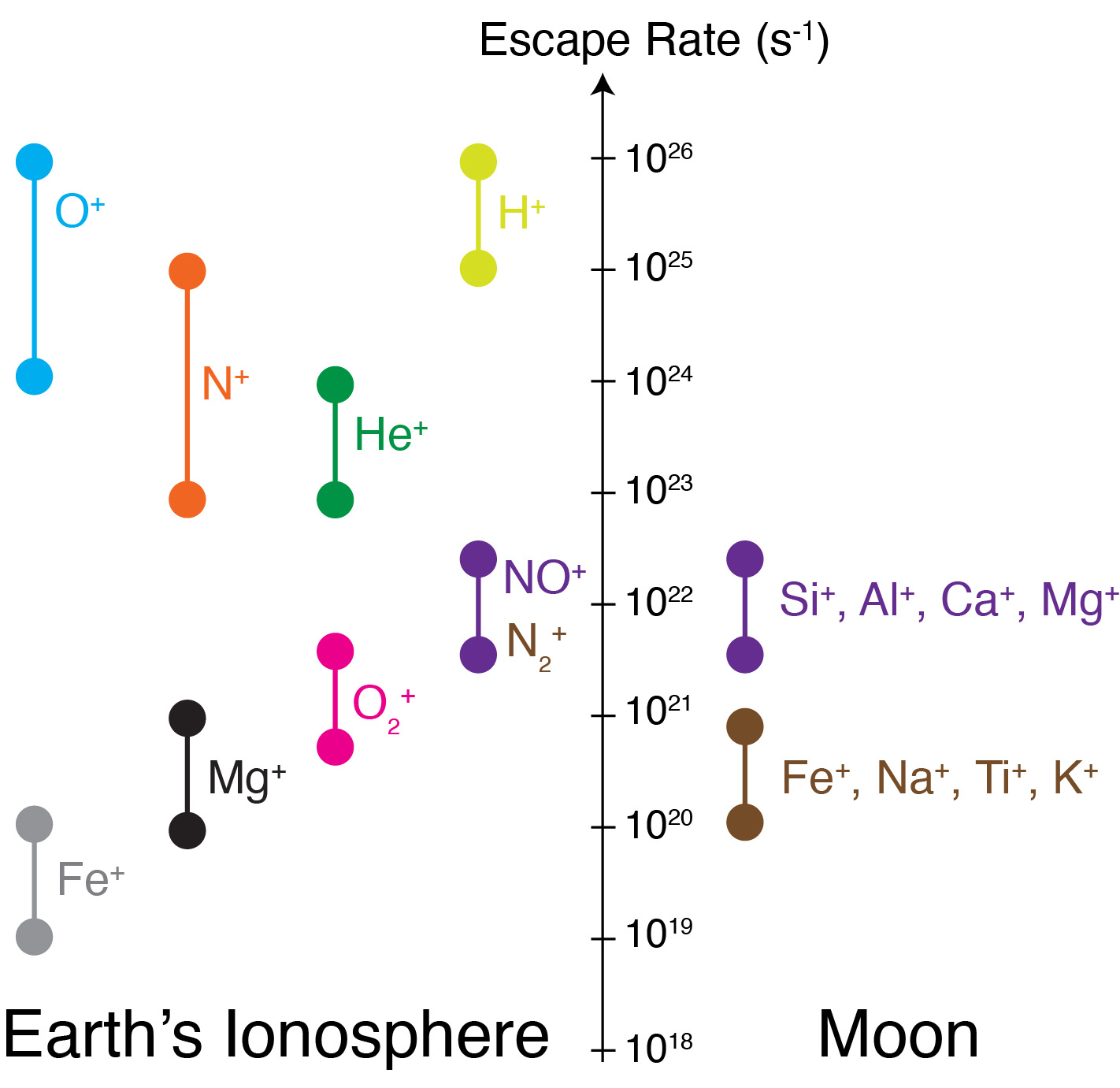2025 ARTEMIS SCIENCE NUGGETS
Metallic Ions Near the Moon: Impact of Solar Activity and Lunar Position
by Mei-Yun Lin
NASA Jack Eddy Postdoctoral Fellow
Space Science Laboratory
University of California, Berkeley
Cooperative Programs for the Advancement of Earth System Science (CPAESS)
University Corporation for Atmospheric Research (UCAR)
Introduction
Unlike Earth, the Moon has a thin atmosphere and no global magnetic field, allowing the impacting particles to modify its surface regolith directly. The collection of these processes helps the Moon sustain a tenuous, surface-bounded neutral atmosphere known as the lunar exosphere. Metallic ions are commonly found in the lunar environment, primarily produced by ionization of the neutral lunar exosphere. The background plasma accelerates these metallic species as the Moon moves through the solar wind upstream, magnetosheath, and magnetotail.
While previous observational studies have indicated a significant presence of ions with masses of around 28 and 40 amu near the Moon, the abundance of these heavy ions and their variations with the Moon's location and solar activity have yet to be understood. This study combines the lunar pickup ion model and in-situ ARTEMIS observations to calculate the production and ionization rates of metallic ions from the Moon.
Results
Based on the 12-year ARTEMIS data, our analysis indicates that the magnetosphere effectively reduces the production of metallic neutrals and ions due to a decrease in ionization and sputtering rates. As seen in Figure 1, Al+ and Si+ are the predominant metallic pickup ion species, with fluxes ∼106 cm−2 s−1. In contrast, the fluxes of other metallic species, including Na+, K+, Ti+, and Fe+, range from 103 to 105 cm−2 s−1. The maximum flux values are likely caused by geomagnetic storm activities that directly impact the lunar surface, whereas the minimum values generally occur when the Moon traverses the magnetotail. Al+ fluxes show minimal variation, as evidenced by the IQR (the difference between the first and third quartiles) close to the median value, and the fluxes of other metallic ions vary by a factor of 2–5.
| Figure 1. Metallic ion fluxes from the Moon, including Na+ (brown), Mg+ (magenta), Al+ (black), Si+ (purple), K+ (green), Ca+ (blue), Ti+ (orange), and Fe+ (light green). Box plots indicate the minimum, first, second (median), third quartiles, and maximum values. |
Conclusion
A new source for metallic ions in the magnetosphere was proposed in this study: the lunar regolith. By integrating the average metallic ion fluxes from the Moon with the lunar surface, the total escape rate of metallic ions from the Moon is estimated ∼1023 s−1. This number is comparable to the total escape rate of molecular and metallic ions from Earth's ionosphere, as seen in Figure 2. Furthermore, escape rates of metallic ions originating from the Moon are larger by an order of magnitude than those from the ionosphere. The comparable rates suggest a need to reevaluate the observations of heavy ions in the magnetosphere, such as those from previous Cluster and Geotail missions, to understand their origins and transport pathways.
| Figure 2. Ion escape rates from Earth's ionosphere (left panel) based on observational and modeling studies and Moon (right panel) from this study. |
References
Lin, M.-Y., and Poppe, A. R. (2025). Metallic ions near the Moon: Impact of solar activity and lunar position. Journal of Geophysical Research: Space Physics, 130, e2024JA033566. https://doi.org/10.1029/2024JA033566Biographical Notes
Mei-Yun is currently a NASA Jack Eddy Postdoc Fellow hosted by Dr. Andrew Poppe in Space Sciences Lab, University of California Berkeley. She will join the Department of Electrical and Computer Engineering at University of Massachusetts Lowell as a tenured-track Assistant Professor in Fall 2025. Her research focuses on understanding the variations of near-Earth environment, including the Moon, in response to the space weather using the numerical modeling and data analysis.
 Please send comments/suggestions to
Emmanuel Masongsong / emasongsong @ igpp.ucla.edu
Please send comments/suggestions to
Emmanuel Masongsong / emasongsong @ igpp.ucla.edu

